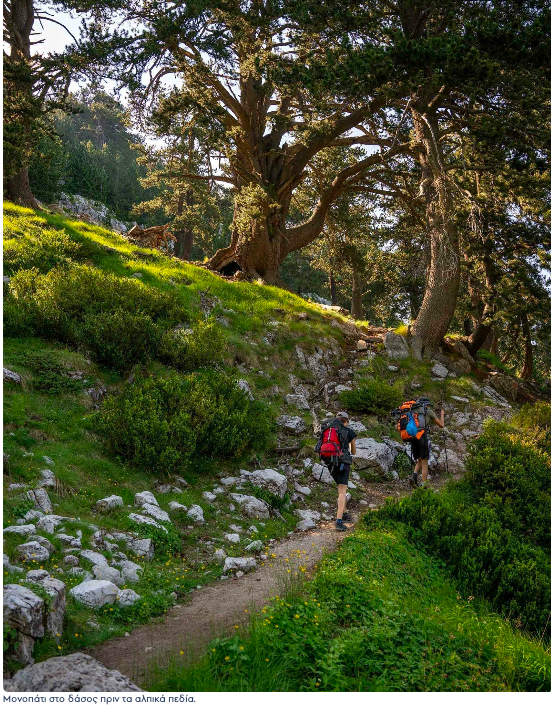The tallest mountain in Greece, known in Greek mythology as the home of the twelve gods, offers countless hiking trails and routes. The legends and myths surrounding it make Olympus one of the most alluring destinations. Ten years ago, most hikers you’d see on Olympus were foreign tourists. However, since the COVID-19 pandemic, hiking has seen an unprecedented rise in Greece. Today, Greek hikers dominate, especially on weekends, as more people appreciate the natural landscapes and the exercise opportunities the mountain offers.

The Throne of Zeus and the Legendary Peaks
The Stefani peak, where Zeus is said to have placed his throne according to mythology, is one of the highest points of the mountain at 2,909 meters.
The Challenging Passage
On Olympus’ eastern side, the most common access point, four organized refuges are operational, accessible only via hiking trails. These refuges typically function from May to October, resupplied by mules, and provide lodging, meals, and basic amenities. They enable exploration of the upper zones of the mountain, where potable water is scarce and the elevation changes often require a rest stop.

The two most popular starting points for alpine field ascents are Gortsia and Prionia, located above the town of Litochoro. The route from Gortsia is considered the most spectacular, passing through the Laimos passage, offering breathtaking views of the legendary mountain. From there, the Plateau of Muses and the Throne of Zeus create a unique scene, perfect for photography and reflection.

Planning Your Hike
The recommended hiking season is from June to October, following a well-marked trail without technical difficulties. The path goes from Gortsia (1,130m) to Petrostrouga Refuge (1,940m), then to the Skourta peak (2,476m), through the Laimos passage to the Muses Plateau (2,600m). The total distance is 11.3 km, with an elevation gain of 1,600 meters, requiring good physical fitness. A rest stop at the Petrostrouga Refuge is advisable for an easier and more enjoyable experience.

The natural beauty of Olympus is also remarkable. At lower altitudes, hikers will encounter dense forests of pines, firs, and beech trees, while higher up, the landscape becomes alpine with sparse vegetation. The mountain’s rich fauna includes rare species of birds, reptiles, and mammals, making it an important biodiversity refuge.

When planning an excursion to Olympus, it’s essential to have proper footwear, and sufficient water, and to monitor weather forecasts regularly, as sudden weather changes are common. For novice hikers, starting with an experienced guide or joining organized groups is recommended, as the mountain can be unpredictable.



Michalis Lapardas is a travel photographer and experienced mountaineer who loves discovering and sharing the unexplored natural beauties of Greece on social media. @mikelapardas/Instagram
Ask me anything
Explore related questions





